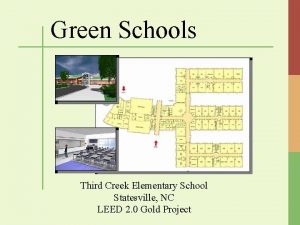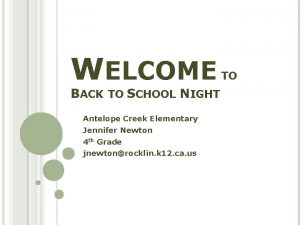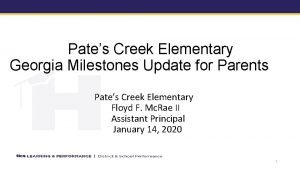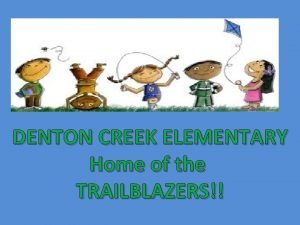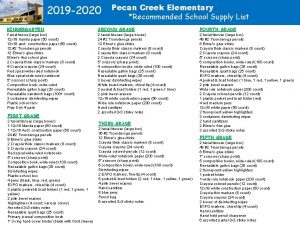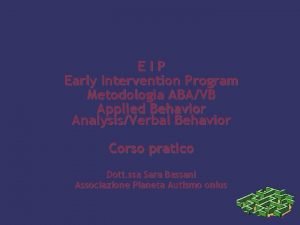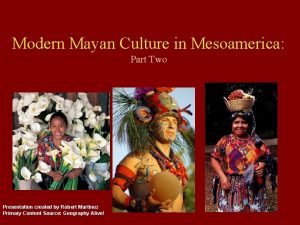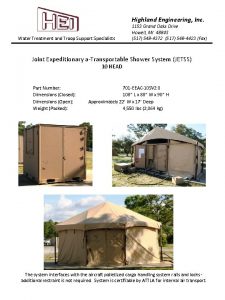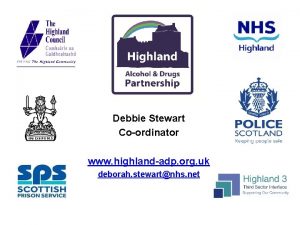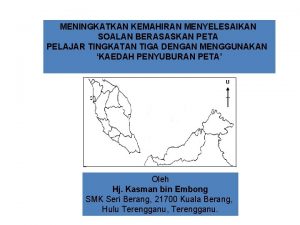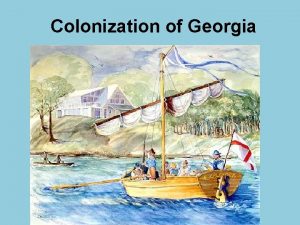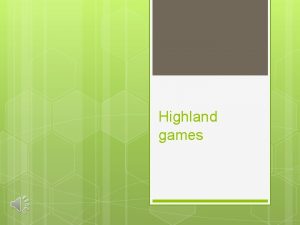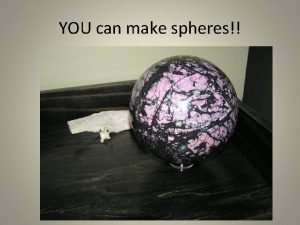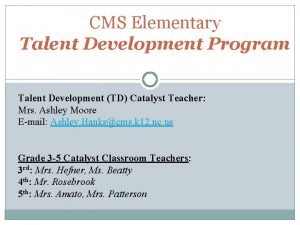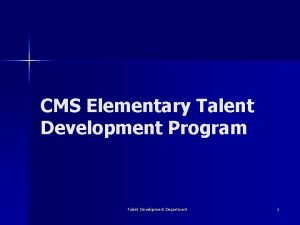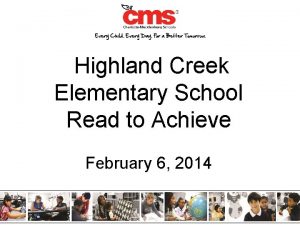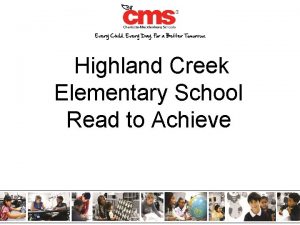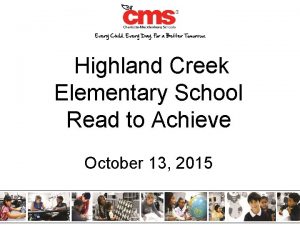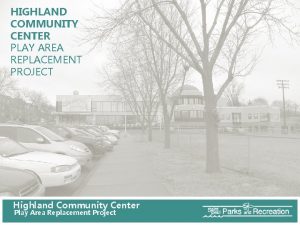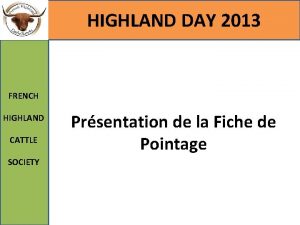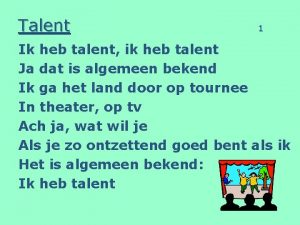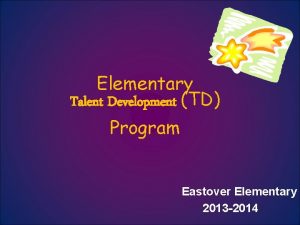Elementary Talent Development TD Program Highland Creek Elementary
















- Slides: 16

+ Elementary Talent Development (TD) Program Highland Creek Elementary 2020 -2021 Sept. 28, 2020

is the mission of CMS’s +What Elementary Talent Development Program? To provide appropriate academically and socially/emotionally intellectual opportunities that help gifted & high ability learners realize their potential and connect them with their complex world.

+ Our Meeting Goals Explore how the needs of gifted and high-ability learners are met through the Catalyst Model. Experience snapshots of gifted curriculum and resources and how we are integrating them into instruction at Highland Creek Review the Differentiated Education Plan/End of Year Review for 2 nd-5 th graders.

+ TD Catalyst Teacher Responsibilities ■ Provides professional development for staff on instructional best practices in gifted education ■ Models best teaching practices ■ Utilizes collaboration and consultation skills to implement TD Catalyst Model ■ Provides assignments, activities, contracts, and other learning opportunities to assist teachers in differentiation curriculum.

+ So, how does the Catalyst Model Work? ■ The classroom teacher and Talent Development teacher share responsibility for the education of gifted students. ■ The TD teacher provides lessons and activities for teachers to use in the heterogeneous classroom AND/OR teachings students directly. ■ The TD teacher provides enrichment and acceleration for students who have shown mastery of objectives being taught in the regular classroom through direct or indirect instruction.

+ What are Direct Services? ■ Direct services, or “face time”, are lessons that are created and taught by the TD teacher ■ Direct services can be “pull out” (students pulled into TD/Catalyst classroom) or “push in” (students remain with classroom teacher when TD teacher comes in to co-teach with classroom teacher.

+ What are Indirect Services? ■ Indirect services are lessons and activities developed by the TD/Catalyst teacher and provided to the classroom teacher for him/her to use in his/her classroom. ■ Examples are: curriculum compacting, centers, independent contracts, projects, alternative classwork, lessons.

+ Why the need for direct and indirect services? ■ Often there are too many students for one person to reach alone. Differentiation is required in the regular classroom to provide all students with the education they need and deserve. ■ Since the TD teacher cannot see all children, all day, every day, the classroom teacher requires activities and lessons from the TD teacher for those students while they are in the regular classroom. ■ Without differentiation, everyone would move at the same pace, be evaluated in the same way, and complete the same activities – regardless of their prior knowledge or individual needs.

+ What is the Catalyst Model? ■ ■ Joint effort by TD Catalyst Teacher and Classroom Teacher(s) Allows classroom and TD teacher to design & implement frequent enriching & differentiated educational experiences for gifted and highability students Includes: co-teaching, whole group mini-lessons, small group lessons, individual conferring Modeling of higher level strategies

+ Why the Catalyst Model? • Gifted education and general education are related, connected, and integrated. • The pace of learning is enhanced. • High achieving students receive more challenging tasks within the classroom. • Classroom and TD Teachers work together to maximize student learning.

+ What types of teaching strategies are available for HCE’s gifted students? • Curriculum Compacting • Tiered Lessons • Novel Studies • Socratic and Paidaea Seminars • Learning Centers • Integrated Research Projects • Technology Enhanced Lessons

+ What are DEPs? • DEPs are Differentiated Education Plans • DEP’s are a document completed annually which lists learning environment, content modifications, and special programs available to the student during that year. • Social and emotional goals are only included as needed.


+ End Of Year Performance Review At the end of each year, each TD certified student in grades 2 -5 will receive a TD student performance review rating in addition to their regular report card. Please note: these ratings DO NOT affect the report card grades or class placement.

+ Lastly. . “I hear and I forget. I see and I remember. I do and I understand. ” ~Confucius

+ What questions do you have for me? ■ Please don’t hesitate to contact me with questions or concerns related to your child. catherine. fenton@cms. k 12. nc. us cfenton 21. weebly. com
 Third creek elementary
Third creek elementary Antelope creek elementary school
Antelope creek elementary school Pate's creek elementary
Pate's creek elementary Denton creek elementary
Denton creek elementary Pecan creek elementary
Pecan creek elementary Eip early intervention program
Eip early intervention program Yeats poem stolen child
Yeats poem stolen child Nnn poem
Nnn poem In what ways have the highland maya adapted to modern life?
In what ways have the highland maya adapted to modern life? Highland mill montessori
Highland mill montessori Water treatment in highland
Water treatment in highland Highland substance awareness toolkit
Highland substance awareness toolkit Highland commercial mortgage
Highland commercial mortgage Cameron highland tanah runtuh
Cameron highland tanah runtuh Who colonized georgia
Who colonized georgia Tacoma highland games
Tacoma highland games Highland park sphere machine
Highland park sphere machine
